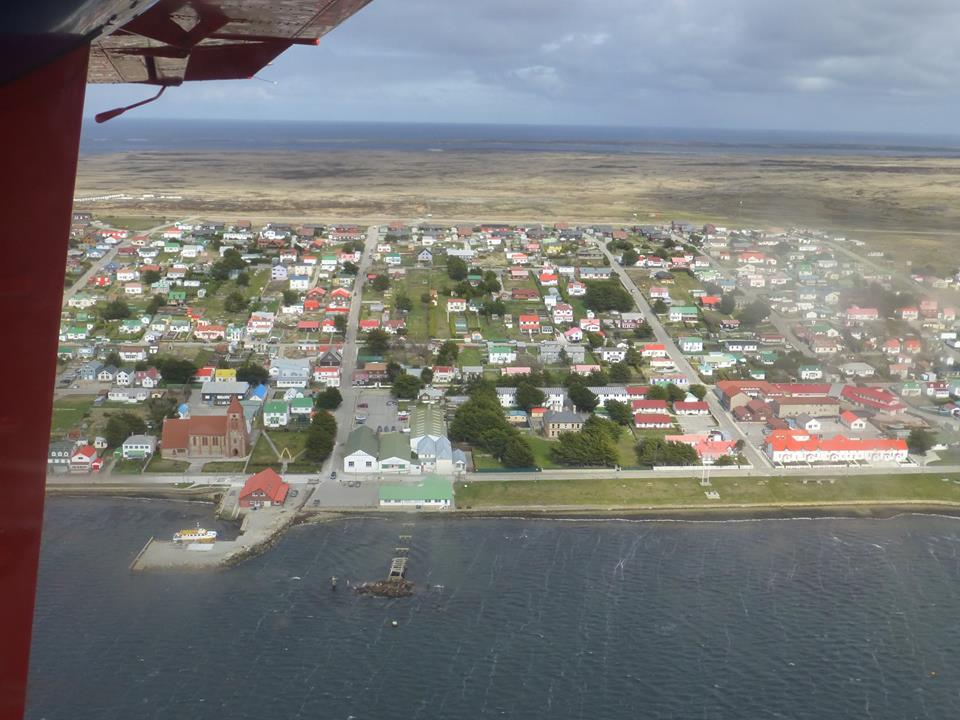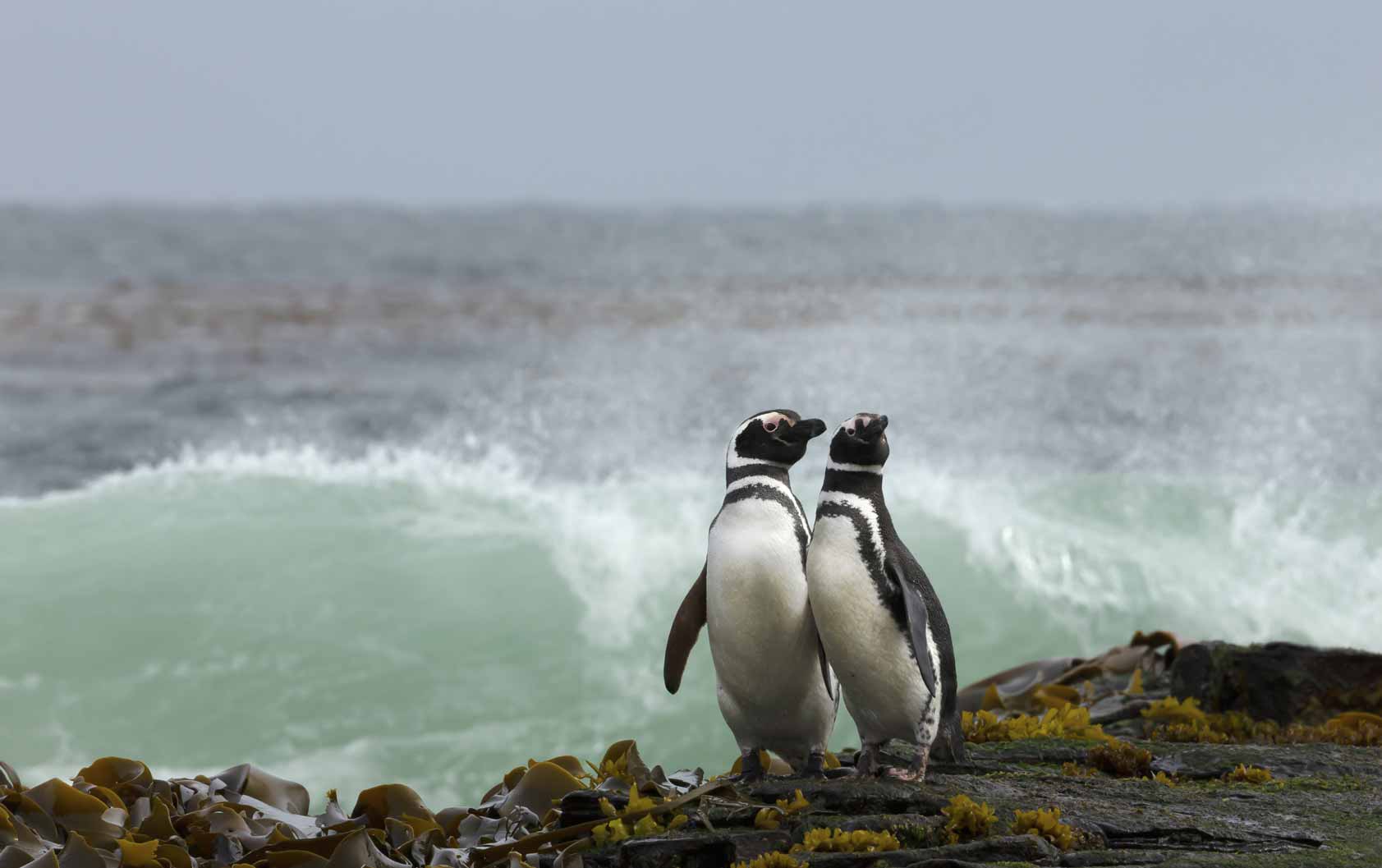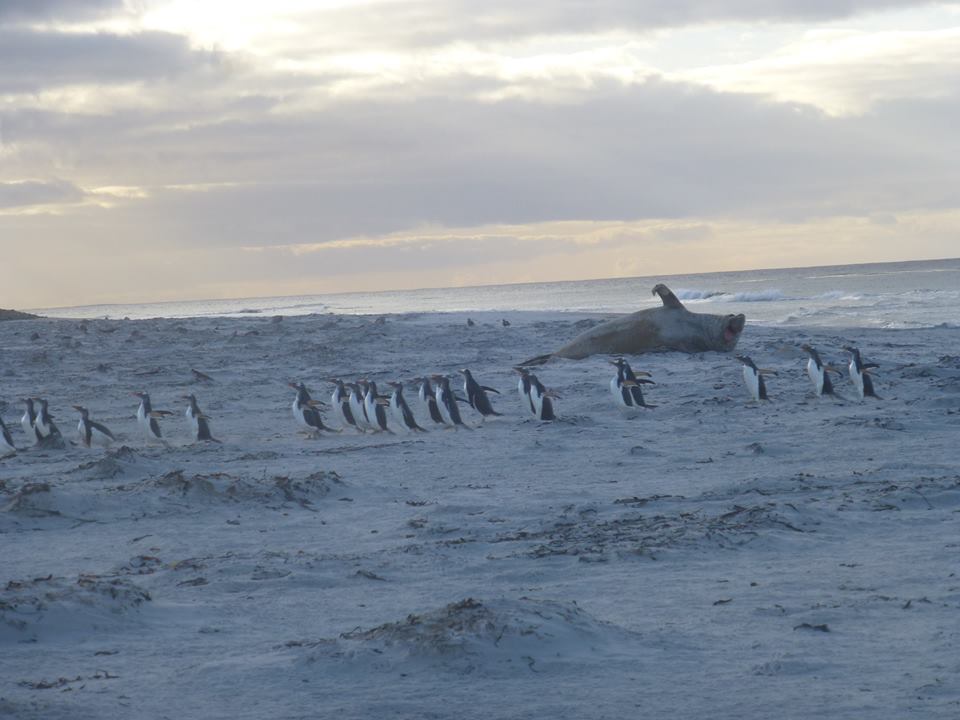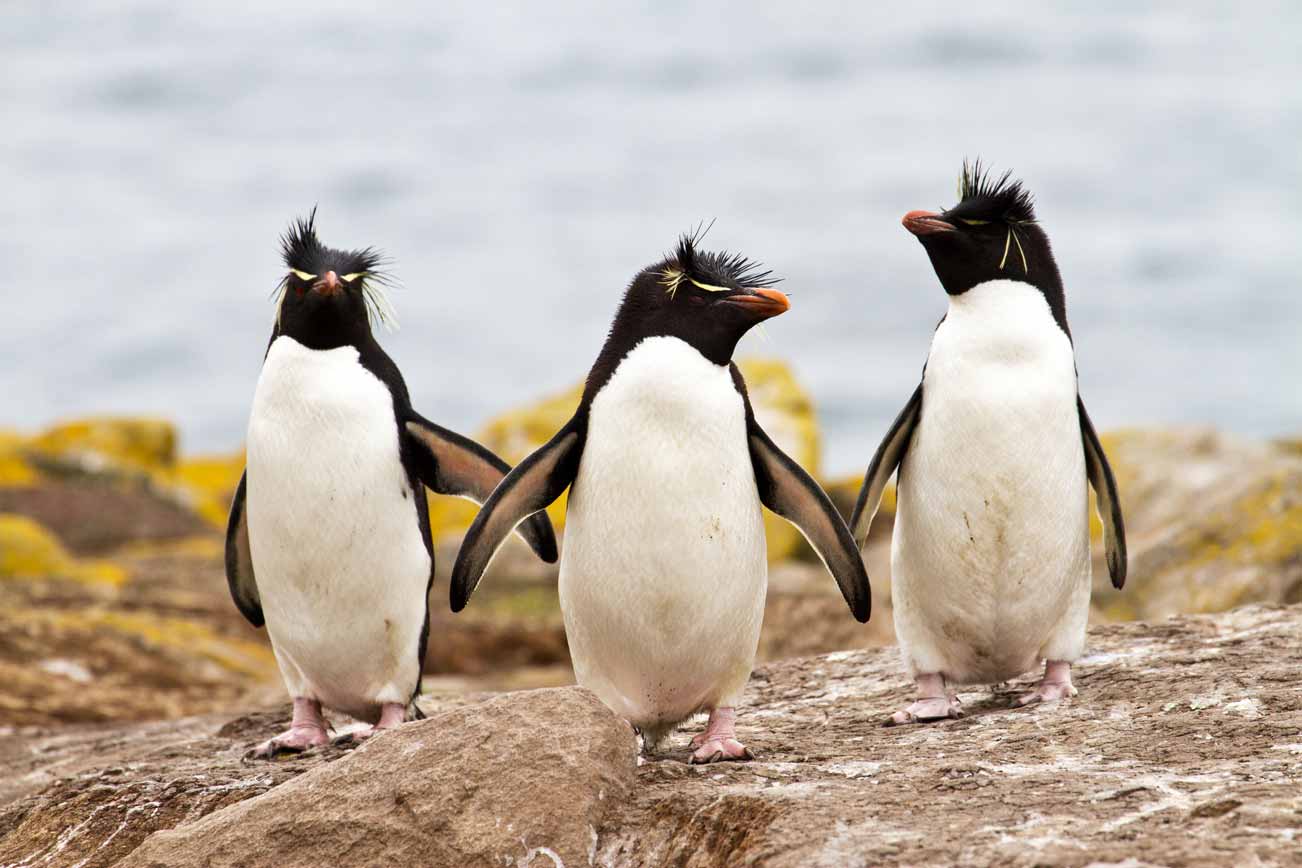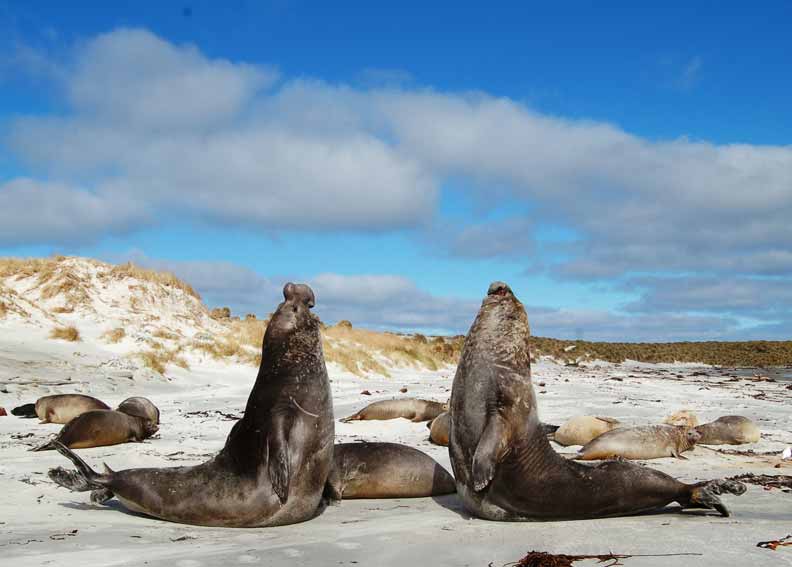These beautiful islands in the South Atlantic Ocean, magnificent wildlife, incredible landscapes and beaches are waiting for you to be explored.
The Falklands consist of two main islands West Falklands and East Falklands also 778 smaller islands, separated from mainland South America by three hundred miles of open sea. Stanley the capital of Falklands Islands described as the world’s most southern capital city. The civilian population of the island, which is made up almost entirely of British descent, varies around 2500 people. Most of these are kelpers – the local term for those born on the island – and live in capital, Stanley. Nine generations of Falkland Islanders have been born and raised in this beautiful and remote island.
The Falklands Islands are home to an abundance and variety of marine mammals and birds. Much of this wildlife is unafraid of people, and it is possible to get close to penguins and other birds without causing undue disturbance. There are five different species of breeding penguin: rockhopper, magellanic, gentoo, king and macaroni. The islands are the most important world site for the endangered rockhopper penguin and are also home to 80% of the world’s breeding population of black-browed albatross. The elephant seal, sea lion and fur seal all bred on these islands. The largest elephant seal breeding site is found on Sea Lion Island, where there are over 2000 individuals seals. Porpoise and dolphin are often seen from the shoreline. Sightings and strandings of whales are reported. Orcas, Sei whales and Sperm whales are the most abundant. There are over 400 species of plant in the Falkland Island, of which 177 are recorded as native and 14 endemic to the islands like white grass and diddle-dee. The main soil is peat and natural vegetation is grassland. There are no indigenous trees.
The Falklands Islands one of the last great wilderness destinations where you can enjoy contact with animals and discover beauty of this unique place in the world.
